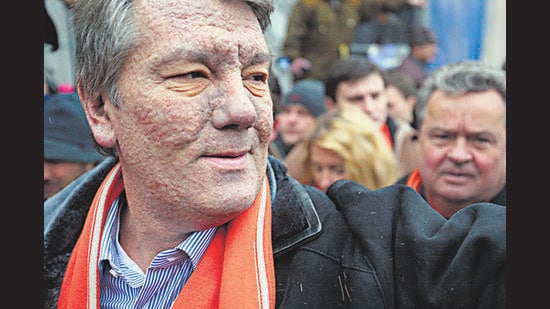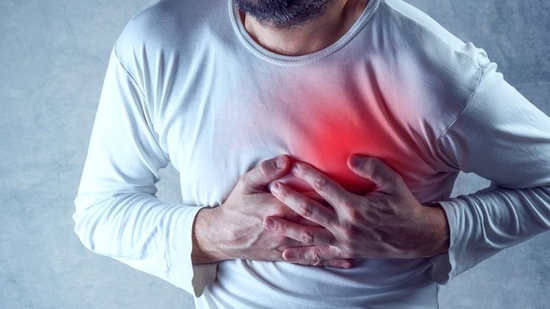
Trade-Offs: Your burning trash has much in common with the Vietnam War, says Mridula Ramesh
2 months ago | 34 Views
Agent Orange, so named for the orange stripe on the barrel in which it was transported, was a chemical cocktail used by the US Army in the Vietnam war.
Survivors recall a white spray falling from the skies, and then forests losing their leaves, crops wilting, and families succumbing to a clutch of different cancers and experiencing alarming rates of miscarriages. Later came children born without eyes, or with bent spines and limbs.
The body-bending deadliness of Agent Orange lay in a trace contaminant: 2,3,7,8-tetrachlorodibenzo-p-dioxin (TCDD) – present in the ratio of only about 2 parts per million in the mixture. TCDD is a dioxin, a group of chemicals where rings of carbon are joined by oxygen molecules, with some carbon atoms bonded to chlorine atoms. TCDD, the deadliest of the pack, ranks amongst the most dangerous chemicals ever made.
Current research suggests that it acts as an effective key to an ancient, central protein involved in gene expression: the aryl hydrocarbon receptor (AHR). This protein is highly expressed in the barriers between the body and the outside world (think, skin, gut, lungs, liver, placenta) where it is believed to modulate the inflammatory response to chemicals. Simply put, it helps the body differentiate chemical friend from foe, and respond accordingly. While many chemicals activate AHR transiently, TCDD keeps it switched on for a long time, leading to chronic inflammation. This is biochemical irony at its finest: a frontline anti-toxin defender being hoodwinked by the greatest toxin of them all.
The chloracne on the face of Viktor Yushchenko, former president of Ukraine and a victim of dioxin poisoning, speaks eloquently of the effects of this toxin on the human body.
The World Health Organization classifies TCDD as a carcinogen, and the litany of cancers in Vietnamese civilians (and American veterans) after the war showcases its potency. Dioxins (and their close cousins, furans and polychlorinated biphenyls) also interfere with endocrine function and congenital development.
Worse still, dioxins linger. Blood samples taken from 43 residents of Bien Hoa city decades after the spraying stopped revealed TCDD levels 200 times the average population level.
Dioxins bioaccumulate in fat. And so, when a person eats a fish tainted with it, or a baby suckles its mother who has been exposed to it, the dioxin is passed on.
And so, the Stockholm Convention, which came into effect in 2004, classifies these toxins as persistent organic pollutants (POPs), whose unintended production must be minimised and, eventually, eliminated. India is a signatory.

Why am I talking about dioxins now?
Because they are being made in your city and mine.
Dioxins are formed when carbon, hydrogen, oxygen and chlorine are burned together, at relatively low temperatures, with poor air flow, lots of moisture, and catalysts such as copper or iron. These conditions are met perfectly within burning piles of waste at landfills, on street corners and in empty lots across India.
Burning discarded objects made of polyvinyl chloride is an especially effective way to make a dioxin. Every day, as I drive my two children to school in Madurai, I see these smouldering hillocks sandwiched between the gleaming office of a leading IT company and a hotel. I see white smoke rise with the wind and settle onto the nearby lake. I see fishermen dip their poles in, and I see the flutter that indicates the bait has been taken. And I know that a dioxin will enter the body of another human.
***
How much dioxin is being released today?
In 2014, Christine Wiedinmyer of the US National Center for Atmospheric Research, and Robert Yokelson and Brian Gullett of the US Environmental Protection Agency (EPA) tried to estimate global emissions from burning waste. It was an ambitious effort and, speaking to Wiedinmyer and Gullett, I got a sense of how uncertain these numbers are — partly because few countries measure how much waste is burned and because waste makeup varies so widely.
Still, their study showed that emissions from open waste burning were a major source of particulate-matter pollution, and of other trace pollutants such as formaldehyde and dioxins. They estimated that open waste burning was emitting 206 TEQ (toxic equivalence quantity, a measure of dioxin toxicity) kg annually — comparable to the amount of dioxin released in the course of the Vietnam War.
For a material that was so toxic that the US Army took it to a faraway island to incinerate, we are being remarkably blasé about releasing it near our homes.
When I raised this question with Baerbel Sinha, a scientist with the Indian Institute of Science Education and Research (IISER) who is studying waste burning in India, she said emission factors were different here because our waste typically contains more biodegradable content and less plastic. Also, waste pickers remove much of the (easily recyclable) plastic and metal before waste is burned. Even so, she added, ignoring rural waste, as official estimates tend to do, underestimates both the quantum of waste generated and the quantity burned.
In efforts to correct this, her team spoke to 246 households in 20 villages about their waste, its composition and how it was handled. They also weighed the waste of 26 households from different income levels in the city of Mohali in Punjab. Their data, extrapolated across India, suggests that our country is burning 2,02,740 tonnes of solid waste a day. This is more than official estimates of how much waste is collected.
***
How much dioxin is all that waste producing?
For that I turned to the results from another study, by a team from the environmental technology division at the Council of Scientific and Industrial Research (CSIR) - National Institute for Interdisciplinary Science and Technology, in Thiruvananthapuram.

They took samples of waste from various dumps across Kerala and burned them in a laboratory setup that simulated the conditions of a similar operation at a garbage dump, and found that dioxin emissions were highest in samples with more moisture, and in those that took the longest to burn. Combining data from both studies, it emerges that open waste burning may produce about 11 TEQ kg of dioxins a year — or about six months’ worth of Vietnam War emissions. That dioxin spreads from the burn site into the air, into your lungs, or into the soil; into the cow munching on leaves contaminated with ash; into the milk; into your body, where it builds up.
Dioxin emissions would be much higher but for the waste pickers who rummage through the dumps. A preprint review of the health hazards faced by waste pickers found elevated levels of chronic inflammatory markers in their body fluids, the quiet fingerprint of dioxin exposure.
***
Why don’t we care?
“We think of the risks of open burning sensorially… We care about the smoke and smell, and once those are gone, we think the harms are gone,” says Gauri Pathak, an associate professor at Aarhus University in Denmark, who is working on the anthropology of plastic. “There is also the cultural context, where we think of fire as purificatory. Moreover, images matter. Seeing charismatic animals suffer makes us care. We are more moved by the sight of a seahorse entangled with an earbud. So we care more about litter in the ocean than the dangers of litter being burnt.”
Indeed, in conversations that researchers at my Sundaram Climate Institute have conducted with over 2,000 residents of Madurai over the years, many have spoken of the burning of waste as a good thing. “It helps keeps the mosquitoes away” was a common refrain. Many added that they had little choice. Once waste piled up in an empty plot or a water channel, the easiest way to clear it away was to set it on fire.
***
The dioxin problem, while deadly, is solvable. Just consider the dramatic fall in dioxin levels in the breastmilk of German mothers over the decades.
So, what can work? “Obviously the best way to manage waste is to not have it in the first place,” says Gullett of the EPA. “But you’re going to get more pollutants per tonne of waste via open burning rather than incineration.” Many developed countries use centralised waste incinerators to reduce harmful emissions. But incinerators polarise the Indian waste ecosystem: some say, correctly, that burning waste reduces the incentive to minimise or recycle plastic. They also say that Indian waste has low calorific value, and one must first remove biodegradable waste for efficient burning. All true.
Others point to the burning piles of trash and a waste management infrastructure that relies on the weakest amongst us to do the heavy lifting. That’s not merely cruel, it’s obscene. Coprocessing waste in cement kilns (where it replaces fossil fuels) is also a solution, but transport costs make it unviable in many locations.
Nalini Shekar, whose organisation Hasiru Dala (Kannada for Green Force), works with thousands of waste pickers, says she sees the incinerator at most as a transition solution between where we are and the zero-waste future we aspire to. Sinha of IISER adds that burning biomedical waste (a potent source of dioxins) in dedicated, centralised, well-monitored incinerators may be the safest way to reduce emissions.
All agree that we need better monitoring and transparency around incinerator operations, and to ensure that we feed them with pre-segregated high-calorie waste. That cannot happen without citizen involvement. But when my institute asked over 2,000 people if waste bothered them, a third of them responded: “No”. Many of those were living amid waste piles and witnessed burning often.
Read Also: read an exclusive excerpt from amal allana’s book on her father, ebrahim alkazi





















